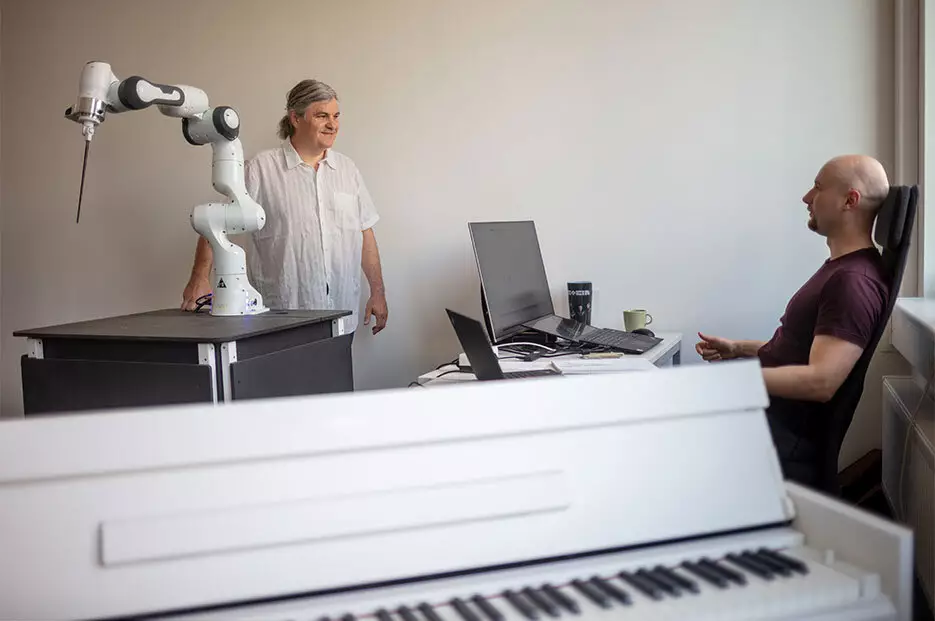The intersection of technology and art has taken an intriguing turn with the introduction of a robotic conductor in Dresden, Germany. This novel innovation, featuring a three-armed machine designed to imitate the gestures of a human orchestra conductor, marks a significant leap in both robotic engineering and the music world. The Dresden Symphony Orchestra performed under this mechanical maestro, showcasing the potential of robots to engage in collaborative musical efforts with human performers.
The robot in question is a sophisticated piece of engineering, boasting three independently maneuverable arms that resemble the iconic light sabers from “Star Wars.” Each arm is equipped with a baton that allows it to deliver nuanced cues to musicians. Its inaugural performances brought attention to a specially composed piece titled “Semiconductor’s Masterpiece” by Andreas Gundlach, which was tailored to fully exploit the robot’s capabilities. This work serves as a tribute to collaborative efforts between humans and robots, demonstrating the unique musical dialogues that can emerge between the two.
Training the Robot: A Lesson in Humanity
The developmental journey of this robotic conductor is as fascinating as its performance. Over two years, engineers and musicians from Dresden’s Technical University painstakingly trained the robot to understand the intricacies of musical timing, dynamics, and aesthetic movement. Commendably, this process has highlighted the inherent value of human creativity and expertise. Gundlach, the composer behind the concert, expressed that teaching the robot to conduct illuminated the remarkable complexity of human musicianship. This perspective reminds us that while technology can enhance certain tasks, it cannot fully replicate the depth and passion of human expression.
Challenging Conventional Conducting Norms
The premiere of “#kreuzknoten” by Wieland Reissmann showcased the robotic conductor’s ability to manage different sections of the orchestra simultaneously—an endeavor that would likely overwhelm a single human conductor. The performance required different instruments to play at varied tempos, a challenging task that the robot executed with precision. This raises intriguing questions about the role of conductors in the future. Could machines become standard fixtures in orchestras, or will they serve primarily as specialized assistants to human directors?
As we witness the rise of these robotic entities in artistic domains, the implications stretch far beyond performance. The development of robotic conductors could redefine how orchestras operate, challenge the ways we perceive artistic authority, and inspire a new generation of musicians to coexist with these automated counterparts. In an age when technology continually reshapes our experiences, the marriage of robotics and music offers a fertile ground for exploration and innovation, beckoning us to consider the dynamic interplay between human artistry and machine efficiency.
The debut of a robotic conductor offers a glimpse into a future where machines and humans can share the spotlight in artistic creation. While the essence of music remains deeply rooted in human emotion and innovation, the introduction of such technology invites collaboration, providing new avenues of expression for both musicians and robotic counterparts. As this experimentation continues, it challenges us to think about the authenticity of art and the evolving roles of artists in a technologically-advanced world.



Leave a Reply